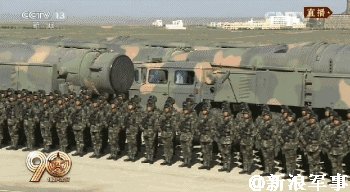BY ROBERT VALENCIA
The Chinese military has recently tested short- and medium-range missiles that could put a U.S. military base or Japan in harm’s way, according to local reports.
The People’s Liberation Army Daily, the official newspaper of China’s armed forces, revealed images and footage of missiles that appeared to be either DF-11 or DF-16, which could travel between 373 and nearly 625 miles.
Although it did not specifically mention where or when the test was conducted, the publication pointed out that it was carried out in several locations, the South China Morning Post reported Tuesday.
Unveiled during a military parade in 2015, the DF-16 could be as accurate as a cruise missile and is capable of carrying up to three nuclear warheads, Sputnik cited Chinese military observers.
This type of arsenal can target Taiwan and the U.S. Marine Corps Base on Okinawa, as well as Japanese islands and the Philippines.
The tests could prove even more challenging for Taiwan, following recent comments from Li Kexin, a top Chinese diplomat to the U.S., who said that China could activate the Anti-Secession Law if U.S. naval ships were deployed to the Taiwan Strait.
 Military vehicles carrying missiles drive past the Tiananmen Gate during a military parade to mark the 70th anniversary of the end of World War Two on September 3, 2015 in Beijing, China.
Military vehicles carrying missiles drive past the Tiananmen Gate during a military parade to mark the 70th anniversary of the end of World War Two on September 3, 2015 in Beijing, China.
Last week, Xi Jinping urged troops to be “always ready to fight” as the country continues to make strides in developing military technology.
“In the past, we had more spirit than steel. Now we have plenty of equipment, so we need an even tougher and stronger spirit to wield it,” Xi told soldiers.
A recent report from the Washington, D.C.-based think tank Center for Strategic and International Studies shows that China has one of the most active ballistic missile development programs across the globe, and it continues to upgrade its force.
“Short and medium-range cruise and ballistic missiles form a critical part of its regional anti-access and area denial efforts,” the report reads.

Some of China's most powerful missiles include the DF-26 intermediate-range ballistic missile—also known as the “Guam Killer” due to its capability of striking the U.S. territory from mainland China—and the DF-17 hypersonic ballistic missile, which can travel nearly 870 miles and is designed to fly fast and slow to avoid being detected.
China is considered a nuclear power and has the third most powerful army in the world, according to the Global Firepower Index.